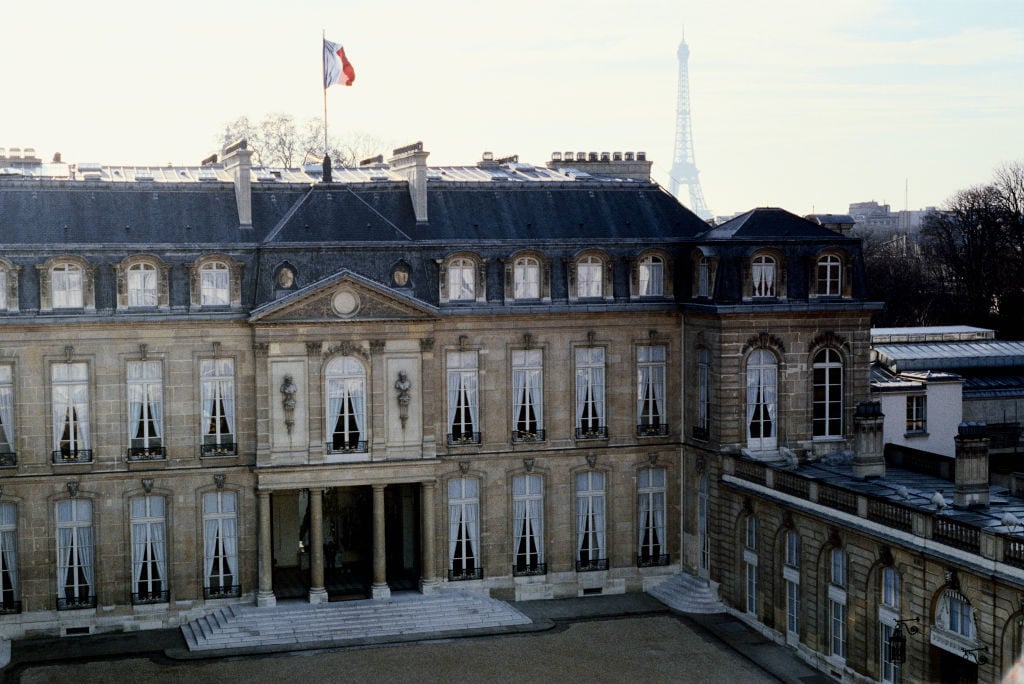Art World
Hundreds of Artworks Have Been Stolen From France’s Presidential Palace Over the Decades. Did Former Officials Take Them as ‘Souvenirs’?
French detectives are investigating the disappearance of thousands of items from state buildings.

French detectives are investigating the disappearance of thousands of items from state buildings.

Naomi Rea

Detectives in France are investigating the disappearance of more than 50,000 items—including hundreds of works of art, antique furniture, and crockery—from the Élysée Palace and other state-owned buildings and residences. Authorities blame careless record-keeping for a lack of certainty on whether many of these missing items have been lost, stolen, or are simply sitting in a storeroom somewhere, but sticky-fingered government employees are suspected to be to blame for at least some of the missing loot.
Back in June, the country’s National Center for the Visual Arts filed an official complaint with a special police unit within France’s Ministry of the Interior in Paris for the theft of seven works of art from the presidential palace. The total value of the missing works, which include wooden and terracotta statuettes, and a bronze bust, is estimated at a few thousand euros. An official inventory shows that the items, which were acquired between 1879 and 1984, disappeared at some point between November 2012 and January 2013. The organization was forced to file the complaint after an extensive investigation into the whereabouts of the objects.
But the rot runs much deeper than that. Thousands of state assets have gone missing from the presidential palace (the Elysée), the prime minister’s residence (the Matignon), the National Assembly, and other museums, town halls, and embassies over the decades. According to a report by France’s committee for the inventory of artworks, which is part of its culture ministry, more than 50,000 objects are currently missing in action.
While many of these items are considered lost due to shoddy record-keeping—recently, for example, a chandelier that had been missing for 25 years was found collecting dust in a storage room at the Elysée—a considerable portion of them are thought to have been stolen.
“At the end of 2018, 2,300 complaints for theft were filed by the institutions in charge of these works,” Jean-Philippe Vachia, president of the French committee, told the paper Le Parisien. Eighty-seven of these complaints were made by the French presidency, and a further 60 came from the prime minister’s offices.
“The stolen objects are not masterpieces, but they could still be worth tens of thousands of euros, and especially have an important heritage value,” Vachia says, adding that it was a habit of many employees of the state to “take a souvenir” with them when they left office, right up until the 2000s, when the government introduced an inventory system that forced representatives to take stock on entry and exit of their positions.
In 2010, the former prefect in charge of the Lozère region, Françoise Debaisieux, was sentenced for stealing nearly $15,000 worth of paintings and furniture from her official residence. More recently, a former sub-prefect of the Haute-Loire region, Hugues Malecki, was jailed for two years and fined some $180,000 after it turned out he had swapped out a painting by Nathalie Gontcharoff with a crude copy.